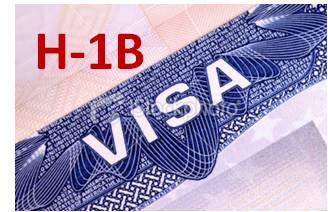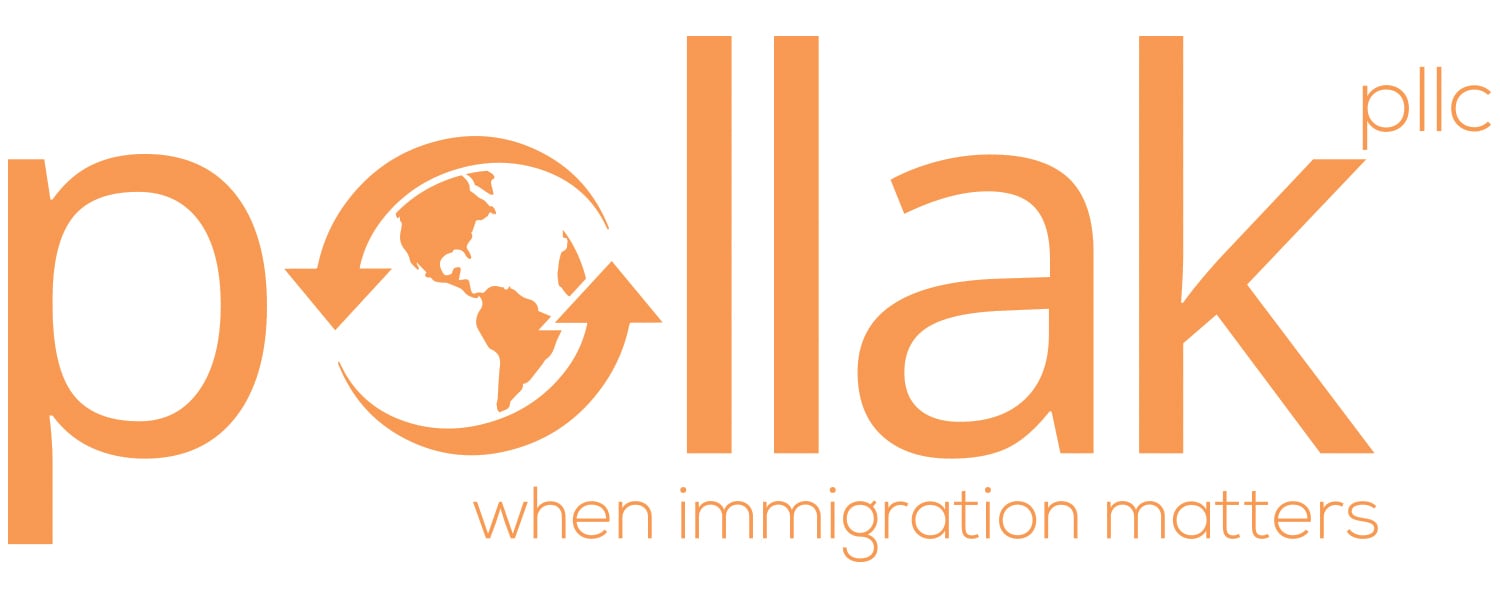 On April 1, 2013, the United States Citizenship and Immigration Service (USCIS) begins accepting H1-B visa applications for the 2014 fiscal year (which starts on October 1, 2013). In 2008, U.S. Citizenship and Immigration Services (USCIS) received approximately 163,000 petitions during the five-day filing period and conducted a random lottery to select the 65,000 petitions that would be eligible for processing. In 2007, the USCIS reached its H-1B visa quota in one day. Due to the slump in the economy, last year all H-1B visas were not taken until the end of June 2012. While we cannot predict how quickly these visas will be taken, since the economy has picked up, we guesstimate that the cap will be reached well before June 2013.
On April 1, 2013, the United States Citizenship and Immigration Service (USCIS) begins accepting H1-B visa applications for the 2014 fiscal year (which starts on October 1, 2013). In 2008, U.S. Citizenship and Immigration Services (USCIS) received approximately 163,000 petitions during the five-day filing period and conducted a random lottery to select the 65,000 petitions that would be eligible for processing. In 2007, the USCIS reached its H-1B visa quota in one day. Due to the slump in the economy, last year all H-1B visas were not taken until the end of June 2012. While we cannot predict how quickly these visas will be taken, since the economy has picked up, we guesstimate that the cap will be reached well before June 2013.
The H-1B visa program enables U.S. employers to hire highly educated foreign professional workers for “specialty occupations” — jobs that require at least a bachelor’s degree or the equivalent in the field of specialty. These foreign workers provide needed specialized or unique skills, fill a temporary labor shortage and/or supply global expertise. Holders of these visas can stay in theUnited Statesfor up to six years.
Employers seeking H-1B visas should start planning ahead. Unlike in previous years, obtaining a certified Labor Condition Application (LCA) is no longer immediate upon submission online. Now employers have to submit the LCA to the Department of Labor and wait up to seven days if not longer to obtain an approved LCA. The LCA contains several attestations by the employer including an attestation that they will pay the H1-B employee the prevailing wage for the job position.
Many employers have already experienced delays in obtaining an approved LCA where the Department of Labor cannot verify the employer’s tax identification number and requires additional documentation before providing an approved LCA.
Prudent employers need to start considering and planning their H-1B visa needs for the upcoming fiscal year. It is also advisable for employers to start making contingency plans for bringing temporary professional workers to theUnited Statesif the H1-B cap is reached.
WHY THE EARLY H-1B VISAS CUT-OFF?
H-1B visas are limited to 65,000 per year. However, certain cases are exempt from the cap. This numerical limit is further reduced by free trade agreements that specifically allocate 6,800 H1-B visas for nationals ofSingaporeandChilemaking only 58,200 visas available in the standard H-1B pool.
WHO IS EXEMPT FROM THE H1-B CAP?
The following cases are exempt from the H1-B cap: 1) extensions for current H1-B workers, whether for a new or existing employer in sequential employment situations; 2) concurrent employment in a second H-1B position; 3) amended petitions; 4) H-1B employment for nationals of Chile or Singapore, 5) petitions for new employment at an exempt organization such as a nonprofit research organization, an institution of higher education or an affiliated non-profit entity and 6) 20000 H-1B visas for graduates of U.S. universities who have earned a Master's or higher degree.
IMPACT OF THE EARLY CUT-OFF OF H1-B VISAS
After the H-1B cap is reached, private employers cannot hire new temporary professional workers in H-1B status for the 2012 fiscal year. For those employers in need of hiring temporary professional foreign workers after the H-1B cap is reached, there may be alternative options available.
WHAT OTHER VISA OPTIONS ARE AVAILABLE?
The L-1 Intracompany Transferee Visa
The L-1 or intra-company transfer visa facilitates the transfer of key employees from a foreign corporation to aU.S.branch, parent, subsidiary, or affiliated entity. This visa allows aU.S.company to bring in top-level managerial, executive, or specialized knowledge employees for a temporary period. The employee must have worked for the foreign company for at least one of the past three years or six months for blanket L scenario and must work for theU.S.company in a similar position. It need not be the same status as overseas (ex: specialized knowledge overseas could be a manager in theUnited States. Only needs to be in one of the three classes: manager, executive, or specialized knowledge). The foreign entity may pay the employee his or her salary but theU.S.company must control the employee’s performance of his or her work. Authority to engage and terminate the employee is strong evidence of control. There are no numerical limits on the L visa and the spouse of an L visa holder may apply for work authorization. The L visa is initially valid for up to three years in the case of an existing business and up to one year where a new business is established in theUnited States. There is a five-year limit on L-1B employees with specialized knowledge staying in theUnited Statesand a seven-year limit for L-1A managers and executives.
Consular posts generally see an increase in L-1 applications after the H-1B cap is reached. However, there is no legal reason why aliens eligible for H-1B status cannot legitimately seek out other type of visas, including L visas.
The Treaty-Trader/Treaty -Investor Visa (E-1/E-2)
E or treaty visas are available to persons or entities engaging in trade between theUnited Statesand their home country or persons and entities coming to theUnited Statesto develop and direct enterprises in theUnited Statesin which they are investing substantial amounts of capital. The E-2 category includes individual investors and managers, executives, and essential skills employees of business entities that do the investment. As a threshold issue, in order for a foreign national to qualify for this visa there must be a trader or investor treaty between theU.S.and the applicant’s home country. For treaty traders, the company set up in theUnited Statesmust be at least 50% owned by a treaty country national but the applicant does not have to be an owner of the business. There must be a “substantial” flow of trade (either goods or services) between theU.S.business and the treaty national’s home country. The USCIS determines whether the trade is substantial on a case-by-case basis. Factors that may be considered include the nature of the business, the number of transactions, amount of trade and capital outlay.
With respect to an investment visa, again the business must be at least 50% owned by treaty nationals and there must be a substantial investment, which like the treaty-trader visa is determined on a case-by-case basis. The investor must have experience in the business and must be actively involved. The investor cannot simply invest in a company run by someone else. An E visa holder is normally admitted to theU.S.for a two-year period with unlimited two-year renewals. Spouses of E visa holders may apply for work authorization.
TN Status
Employers may continue to sponsor Canadian and Mexican nationals in TN status under the North American Free Trade Agreement (NAFTA). This visa is available to Mexican and Canadian nationals who have been offered a temporary position in one of the professions described in schedule 2 of NAFTA. The applicant must have the degree or credentials required for that profession. The TN visa is valid for three years and may be renewed indefinitely. A spouse of an employee in TN status is not eligible for work authorization.
The O Visa
Foreign nationals with extraordinary ability in the arts, sciences, athletics, education or business, may apply for an O visa. Beneficiaries in the sciences, athletics, education or business field must show that they have risen to the top of their field evidenced by national or international recognition. Beneficiaries in the arts must show prominence and a record of extraordinary achievement. Beneficiaries in the motion picture or television industry need to show a high-level of accomplishment, above that ordinarily encountered in the field. The O visa is usually granted for three years and is renewed in one-year increments. The O visa may be renewed indefinitely. A spouse of an O visa holder cannot apply for work authorization.
The J-1 Exchange Visitor Visa
This visa is available to foreign nationals to enter theUnited Statesas exchange visitors to participate in government approved exchange programs. First, the prospective employer must establish an approved exchange program. Such program may be sponsored by government agencies, private businesses or educational agencies. The foreign national may then enter theUnited Statesfor the purpose of doing research, gaining training or studying. Depending on the foreign national’s qualifications and the type of exchange program, the J-1 visa is available anywhere from eighteen months for most trainees to forty two months for professors and research scholars. Certain foreign nationals may be subject to a two-year home residency requirement at the end of their stay.
MAKING THE H1-B CUT-OFF FOR FY 2014The prudent employer will be well-served in starting to consider their employment needs for the upcoming fiscal year. Because the USCIS generally works on petitions in the order they were received, it may be worthwhile to pay the extra $1,225.00 premium processing fee to have your H1-B visa applications adjudicated in fifteen days.
Unless Congress raises the annual H1-B visa cap, employers will have to file their H1-B petitions as early as possible and make use of other visas available to bring temporary workers to the United States for FY 2014. Readers are encouraged to contact their senators and representatives to push for an increase in the H-1B cap.

